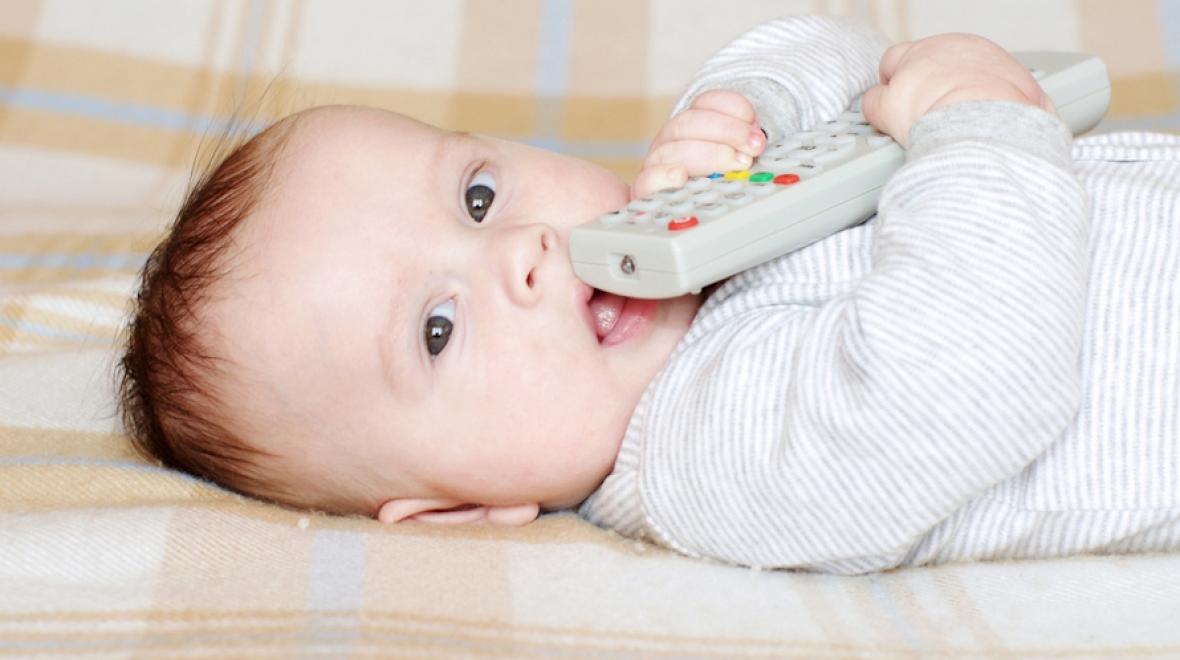
Editor’s note: This article was sponsored by Seattle Children’s Hospital.
A young Seattle-area girl was pretending to be an FBI agent when she chanced upon the perfect spy accessory: a flat, circular metal disc, about the size of a small candy. She inserted the communication prop in her ear, completely unaware that it would harm her.
The object — which was, in reality, a button cell battery — became lodged and began burning through the delicate tissues of her ear. Providers at Seattle Children’s Hospital were able to extract the battery, but it took about a year for the child’s ear canal to fully heal.
The incident demonstrates just one of the potential hazards associated with button cell and lithium coin batteries, which are found in a variety of everyday items, explains Juliana Bonilla-Velez, M.D., the Seattle Children’s pediatric otolaryngologist who attended to the young girl. That’s why it’s important for parents of young children to include these batteries in their child-proofing plan — and to seek immediate medical attention in the event that their child ingests one.
“It’s not something where you call the pediatrician or go to the urgent care,” says Bonilla-Velez. “You go immediately to the emergency room.”
What to do if you suspect your child has ingested a button batterySeattle Children’s providers offer these tips: 1. If you suspect your child has ingested or inserted a button battery, go to the emergency room immediately. 2. If certain criteria are met, giving a child about 10 ml of honey can help limit the battery’s ability to create a damaging circuit. This step can be taken for children older than 12 months of age if it’s been less than 12 hours since the battery has been ingested and if the child is able to swallow. If those conditions apply, give the child about two teaspoons of honey every 10 minutes for an hour or until you arrive at the emergency room. Don’t delay care to get honey, though, as it’s more important to see a health-care provider. 3. When you arrive at the emergency room, make sure to mention the button battery ingestion. You can also ask the provider about administering a medication (Sucralfate) that can coat the battery to decrease progression of tissue injury. 4. There is a 24-hour National Battery Ingestion Hotline: 1-800-498-8666.. |
Youngest children are most at risk
Button batteries are found in all kinds of common household items, from digital watches and remote controls to hearing aids and light-up necklaces.
In the United States, more than 3,500 people of all ages swallow button batteries annually, according to the National Poison Control Center. In recent years, there has been a significant increase in emergency department visits as a result of these batteries, notes a 2022 study published in the journal Pediatrics. Locally, Seattle Children’s has also witnessed a surge in cases, potentially influenced by more children staying at home during the pandemic, coupled with the growing prevalence of devices that are powered by these small disc-shaped batteries.
Ingesting batteries makes up about 90 percent of battery-related emergency department visits, followed by patients inserting them into the nose and ears, according to the Pediatrics study. Battery-related visits were highest among children ages 5 and younger.
At Seattle Children’s, licensed social worker Michelle Noel meets with families after their child experiences such an injury to identify how future exposures can be prevented. She’s learned that these batteries are found in items children can easily access, such as musical greeting cards, holiday necklaces and light-up Easter eggs.
“They’re shiny, they’re small and they look like candy,” says Noel.
Button batteries are especially problematic because they can create an electric circuit with the body’s wet tissues, Bonilla-Velez explains. If the battery lodges somewhere like the esophagus, serious damage may occur as early as two hours after ingestion, with the risk growing as time passes.
Severe injuries, such as a hole in one’s esophagus or trachea, occur in about 3 percent of cases, according to statistical data compiled by the National Poison Data System and the National Battery Ingestion Hotline. Lithium batteries, which contain higher voltage than most other button batteries, are associated with worse outcomes, research has found.
Often, the incident happens in someone else’s home, such as a relative who has not child-proofed the surroundings, Noel notes. While some adults report seeing a child put the battery into their mouth, others will observe a battery wrapper or opened battery case nearby.
If a battery is lodged in their body, a child might experience pain at the site. They might also have difficulty swallowing, drool, vomit or cough up blood, providers say. Other times, caregivers notice nonspecific symptoms that can delay action, such as their child becoming increasingly uncomfortable, lethargic or irritable.
Prevention is key
Health and safety advocates are pushing for increased awareness of the risks associated with button batteries, as prevention is key.
“Truly, the only way to not have injury from button batteries is not to have them in the hands of children,” says Noel. “Know where the button batteries are, go through the house, and remove or secure them.”
If you do need to keep some around, it’s useful to maintain an inventory so that any missing batteries can be quickly identified. Keep them out of sight/reach or ensure they’re secured in their compartment, with screws tight. Taping up a battery compartment adds an extra layer of protection.
Even though older children have a lower risk of ingesting the batteries, it’s still important to teach them about the danger, stressing how they can help keep younger kids safe.
“Teach them: ‘These are a danger. If you see one, give it to an adult,’” Noel advises.
Policy changes could help
While individual awareness of the risks can help, health advocates are hopeful that policy changes could one day reduce the prevalence of these injuries. Noel references Duracell’s 2020 initiative to coat the coin-size batteries with a bitter flavor in the hope that doing so would dissuade children from ingesting them.
Other potential systemwide changes could include battery packaging that’s harder to open or incorporating an enzyme that would coat a kid’s mouth in an identifiable way to inform caregivers that a battery was ingested.
On June 12, 2023, families around the country shared devastating personal stories of button battery ingestion in the hopes of raising awareness. Emmett’s Fight Foundation exists to promote increased training and education that will prevent the situation that befell their family. Their son Emmett swallowed a button battery when he was 1, which resulted in years of surgeries to repair his severely burned esophagus. Ultimately, surgeons removed his entire esophagus, replacing it with a portion of his bowel.
“More and more families are being impacted by this because they were unaware of what could happen,” says Noel. “Our hope is to change this by increasing community awareness.”
Common places to find button batteries, according to the American Academy of Pediatrics:
|
|
Sponsored by: |












